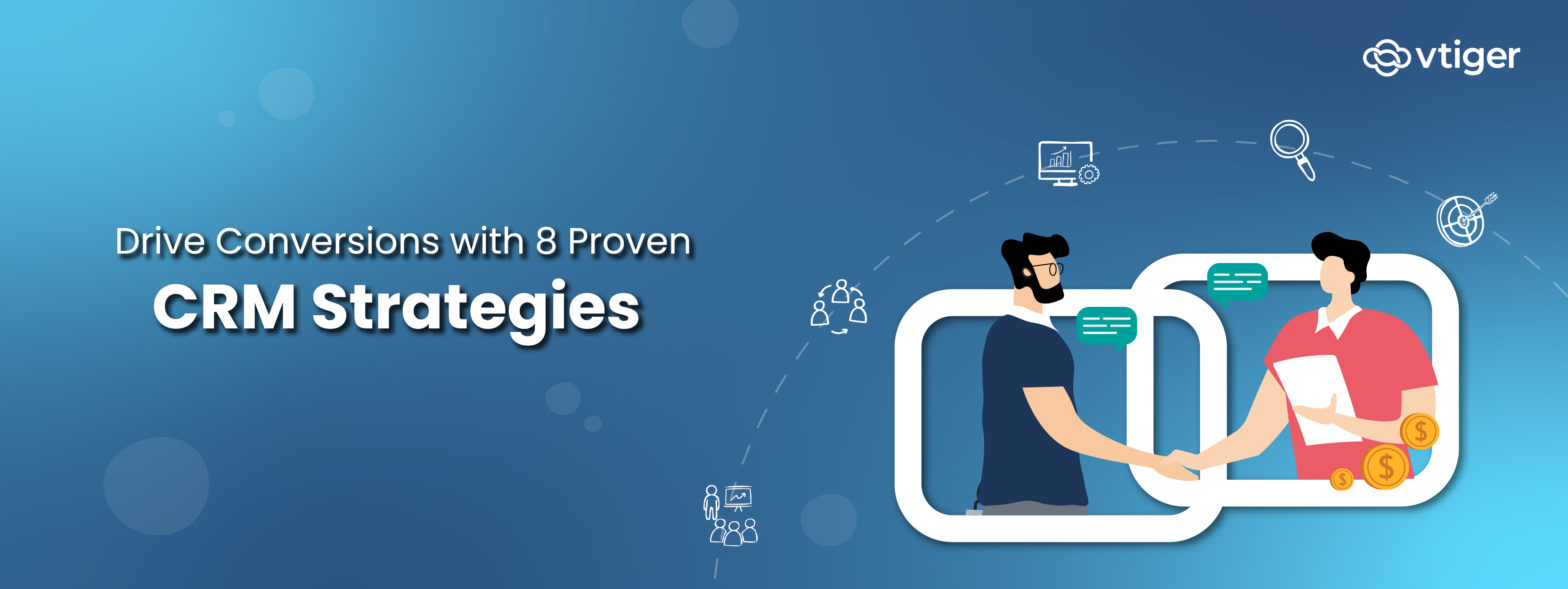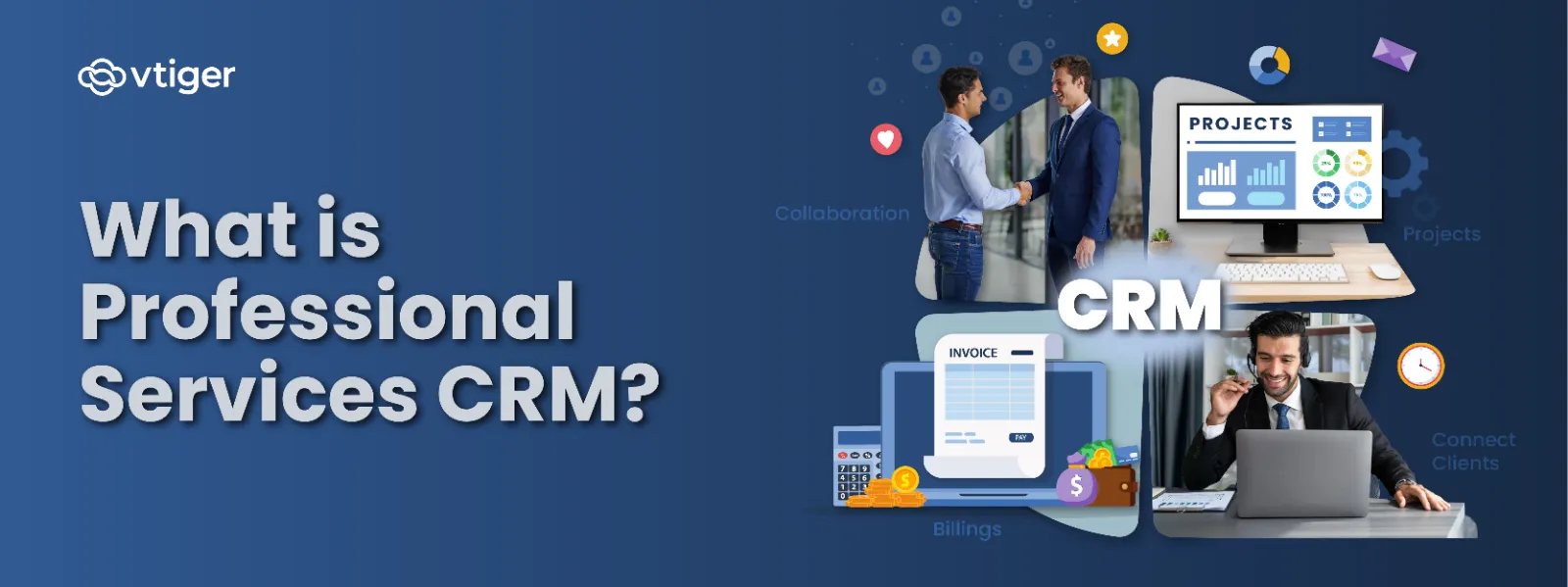Do you run a small business with a team of five, but pay for a CRM designed for fifty users? While investing in a good CRM solution is ideal, you also need a CRM that is suitable for your business, helps your team close more deals, functions smoothly, and lastly allows you to build long-term relationships.
The truth is choosing a CRM is not just about picking the right software. It is about having a well-defined CRM strategy for managing customers, converting and tracking sales, and improving team performance. Without formulating a customer relationship management strategy, even the best application can be futile.
First, let’s define CRM strategy.
What Is a CRM Strategy?
CRM strategy is a structured plan to manage customer interactions and drive growth. In a business, ensuring customers leave happy and satisfied is of utmost importance. So, whether you are into sales, marketing, or customer support, your business’s ultimate goal should be to focus on your customers’ needs and demands.
To attain that, you should focus on implementing an effective CRM strategy. A well thought-out CRM plan includes the use of technology, customer data, and smooth processes to elevate customer satisfaction, foster conversions, and build loyalty.
Why CRM Strategy is important and how it work?
A CRM strategy is not about using the application effectively. It’s about placing your customers at the center of your business. Without a solid strategy, your business can risk having siloed teams, a poor customer experience, and a higher rate of lost deals.
On the other hand, with a CRM plan, you can:
- Connect different areas of business: You can centralize your sales, marketing, and support activities by giving your team access to crucial information whenever they need it.
- Keep the focus on your customers: Remember that business success is not just about closing deals. It’s also about nurturing your customers, building strong bonds that can lead to repeat business and good referrals.
- Drive sales: By automating sales processes like lead scoring, email follow-ups, and pipeline tracking, you can score more deals in less time, improving your return on investment (ROI).
- Offer personalized experiences: Analyze historical data and tailor your product offerings to suit customers’ demands and needs. By offering personalized services, you can improve customer retention and build trust.
- Improve social presence: Integrate social media channels into the CRM system and manage social activities to make your brand visible online. Post on various mediums, address customer inquiries or problems, and track engagement from a single location without toggling between multiple apps.
- Make informed decisions: Gain real-time insights into what strategies are working and what are not across sales, marketing, and support. Generate data-driven reports in seconds and optimize the overall business performance.
8 Steps for Developing a Winning CRM Strategy
Having a winning CRM strategy allows you to attract, engage, and retain customers effectively. Whether you are a small business or a large enterprise, these eight steps will definitely help you build a strategy that delivers greater results.
1. Define Clear Business Objectives

Set up clear goals and ask yourself these questions:
- What do I want to achieve from a CRM?
- Do I want to focus on increasing sales, enhancing customer satisfaction, or improving operational efficiency?
- What is my unique selling proposition?
- How do I differentiate myself from my competitors?
Identifying these goals ensures that your CRM initiatives are aligned with your objectives.
2. Understand & Segment Your Customers

Identify your target customers by collecting relevant information such as website visits, social media interactions, email responses, and purchasing trends. This information allows you to create a holistic customer profile, which in turn helps you gain a deeper understanding of your target groups.
Segment customers based on various factors, such as buying behavior and demographics, to run targeted marketing campaigns. This way, you can increase your sales efforts and engage with the right customers at the right time.
3. Select the Right CRM Platform

Not all CRM platforms are the same. You should choose a CRM that fits your goals, supports your existing processes, and scales as your business grows. Some key criteria to consider are ease of use, customization options, integration capabilities, and reporting tools.
An advanced, feature-rich CRM may look impressive, but if it doesn’t suit your business, it could do more harm than good. So, start by identifying your must-haves like sales automation, email marketing, etc., and evaluate different platforms by reading their reviews and comparing demos to make informed decisions.
4. Train Your Team

No matter how advanced your CRM system may be, it is only effective if your team is skilled at using the platform effectively. Therefore, conduct onboarding sessions to ensure that your team leverages all the features, from logging interactions to setting up workflows.
Start hands-on training tailored to each team. For instance, the sales team should know how to manage the pipeline and close deals, marketing should know how to segment customers and automate email campaigns, and finally, support should be able to focus on addressing large volumes of queries. Provide real-world examples to make the training live and interactive.
5. Automate Workflows

Empower your team by setting up workflows with CRM automation. From assigning leads and event reminders to sales follow-up emails and task notifications, you can automate routine activities to focus on complex tasks. Reduce manual effort to complete certain activities and save your valuable time.
While implementing automation, define clear conditions and ensure the process feels human. Personalize auto responder messages and include options for real-time engagement.
6. Focus on Data Quality

This CRM strategy is all about recording updated and accurate information into the CRM. Poor data quality, such as outdated data and duplicate records, can result in wasted time searching for the right information, missed opportunities, and communication gaps. Therefore, maintaining clean data is crucial in developing a successful customer relationship management strategy.
In addition to accuracy, you also want relevance. So, train your team to capture meaningful information during every client conversation.
7. Personalize Customer Interactions

This step in the CRM strategy involves personalizing messages to each customer. Generic messages are ineffective in today’s world. Customers expect businesses to know everything about them, like who they are, what they want, and where they live. All this information is essential for curating eye-catching messages.
CRM offers you enough information to drive personalized engagement, such as purchasing history, browsing behavior, and conversations.
Some of the messages you can send to your target groups:
- Product recommendations based on past purchases.
- Exclusive offers on birthdays or anniversaries.
- Announcement on new arrivals.
- Reminders for items left in the cart.
8. Monitor and Measure CRM Performance

The journey doesn’t end here. The last step in the CRM plan is to measure what you have delivered. Track key performance indicators like customer satisfaction score, retention rate, churn, sales cycle length, and more. Use CRM dashboards to monitor your results and get an idea of what’s working and what needs improvement.
Benefits of an Effective CRM Strategy
Now that you have a CRM strategy in place, let’s explore the top advantages you may reap in the long run:
Improved Customer Relationships
- Maintain complete customer histories, allowing different teams to personalize interactions at every touchpoint.
- When customers feel heard and valued, it builds trust and loyalty.
- When departments are aligned, you can deliver a superior customer experience.
Enhanced Customer Retention
- With timely follow-ups, you can increase satisfaction rates.
- Automated workflows can ensure all the activities are delivered at the right time.
- Offering better service can help you keep the customers you already have.
Increased Sales and Revenue
- The sales team can prioritize leads, track pipeline progress, and close deals faster.
- Automation can reduce the sales cycle and improve workflows.
- By cross-selling and upselling products, you can have a positive impact on your ROI.
Better Collaboration Across Teams
- Sales, marketing, and support teams can access the same customer data from a centralized location.
- By leveraging shared insights, you can ensure that everyone is aligned around a common goal.
- Collaboration can improve response times and optimize overall operations.
Real World Examples of CRM Strategy
BloomBerry (E-commerce)
- Goal: Minimize Cart Abandonment and Drive Personalized Marketing
- Challenge: BloomBerry, a fashion retail brand, noticed that 85% of its shoppers were abandoning carts. Despite high traffic, conversions were not happening due to a lack of sales outreach and follow-up.
- Solution: They developed a CRM marketing strategy focused on customer behavior and segmentation. By leveraging a CRM, they monitored user behavior across the site, like what products were viewed, added to the cart, or purchased.
- Outcome: This information enabled them to segment customers and run personalized campaigns, resulting in a 40% reduction in cart abandonment rates.
BeeHive (Real Estate)
- Goal: Lead Nurturing and Client Engagement
- Challenge: BeeHive, a mid-sized real estate organization, struggled with managing leads from various sources, including property portals, referrals, and its website. The sales team was unable to convert potential leads due to poor outreach and fragmented communication.
- Solution: The CRM strategy they built was centralizing lead capture and automating sales follow-up. With an improved lead scoring model, they prioritized potential leads and created email workflows for different stages in the buyer’s journey.
- Outcome: They could increase conversion rates by 60%, driving revenue and strong client relationships.
How Vtiger Helps You Implement an Effective CRM Strategy
Vtiger CRM is an all-in-one CRM designed to help businesses of all sizes implement effective CRM strategies to drive growth and revenue. It offers five different editions: One Pilot, One Growth, One Professional, One Enterprise, and One AI. You may choose the edition that suits you best.
Now, let’s understand how Vtiger can support your CRM strategy:
360 Degree View
Vtiger CRM offers a One View feature that consolidates all your customers’ information into a single location. This holistic view helps you personalize your interactions and build long-term relationships.
AI-Powered Calculus AI
Get important customer information by interacting with your CRM system in everyday language, deliver instant replies to customer inquiries with an in-built chatbot, draft email responses with accurate prompts, and more with Vtiger’s Calculus AI.
Workflow Automation
Automate your daily tasks and ensure they are completed on time. Using Vtiger Workflow, improve the overall efficiency of your team members.
Customizable Modules
Utilize custom modules in Vtiger to tailor your system to your specific business processes. Create new modules and update existing ones to improve data management.
Frequently Asked Questions (FAQs)
A CRM strategy can help you boost customer retention, sales, and team collaboration. You can offer personalized support and drive overall growth in the long run.
Implementing a CRM strategy can align with your business goals, customer needs, and behavior. Without a solid CRM strategy, you may lack direction, which can negatively impact your ROI.
You can create effective CRM strategies by defining clear goals, understanding your target audience, and adopting a CRM solution like Vtiger that aligns with your business processes. Train your team to use CRM, automate routine activities, and boost team performance.
The main objective of any CRM strategy is to place your customers at the center of your business, build strong connections, and boost loyalty so that you can maintain long-term relationships with them.



